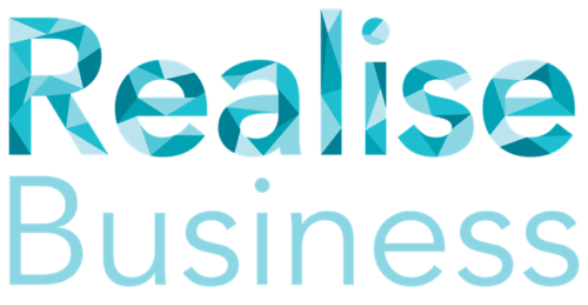This article was originally published by CFO on Call. It has been republished by Realise Business with their permission.
A recent survey of CFO On-Call’s business clients revealed this was the average profit improvement achieved over a three-year period. The important point though is, how were we able to create this result?
Following are the major areas worked on to create this result:
1. Promoting profitable (and eliminating unprofitable) product/service groups or items
This is an easy trap to fall into in any business. Many businesses don’t separate their sales and costs for individual product/service groups or items i.e. they lump all the sales into one account because that’s what the tax office wants to know. This can cause a problem if you have some profitable and some unprofitable areas in a business. The unprofitable ones are cancelling out the profitable ones. If you can do a little work at separating them, so you can clearly see which ones are making money and capitalise on them, and which are losing money and work on why or eliminate them, the result will be better profit overall.
Jobs or projects can be a real profit killer if they aren’t managed well. It’s so easy for overruns in labour to occur and overspend on materials. If jobs aren’t closely monitored and reported on, the mistakes just keep occurring and you end up with very little profit at the end of the day for all the hard work. There are some very cost-effective job management systems available that help to easily eliminate this situation.
2. Helping with effective staff performance
Many business owners struggle with HR management. They can’t find the time, don’t have the tools and templates to make it easy, they are too close to the staff and find it hard to give constructive feedback in the right way.
Well performing staff are an absolute must if you want to run a successful and profitable business. Sometimes it helps to get a little outside help and the results can have a very big impact on the bottom line. There are some fantastic HR management tools available online, that make it so easy to manage hiring, performance and firing. Importantly they help to ensure you do it right and remove the risks associated with HR, as some are backed by industrial relations law firms.
3. Helping set lower levels of overheads and costs
Overheads are the expenses incurred each month, irrespective of whether you sell anything or not. Costs are the direct costs of selling a product or service e.g. buying the product to resell or cost of labour and materials on a job/project.
Overheads are commonly allowed to get out of hand in many businesses. They are incurred as and when things are required in the business without any control or budget. This is a recipe for disaster in profit terms. You bust your guts making sales then find at the end of the year you haven’t made any profit because it’s all been eaten up in overheads and costs that were allowed to get out of hand.
The best way to avoid this is to start with a budget. Think about the minimum overheads you need to run the business. Do you really need to start off with a big factory or office space? Could you manage with a smaller one or one that you just rent when you need it? Can you minimise your staff headcount by being better organised with who does what and outsourcing some work?
Once you’ve worked out your minimum overheads you can enter them into your accounting system to be reported on against actuals each month to ensure they are on track. If they go off track, you can quickly investigate why and fix things.
When you know what your overheads are, you can then work out how much sales you need to make to cover them. This is referred to a your ‘break-even sales’.
When you’ve calculated costs per product or job you then calculate gross margin. For example, if a product costs $40 (including all costs associated with getting the product ready for sale) and you’re selling it for $100, the gross margin is 60%.
Now you need to know your overheads. Let’s say they are $30,000 in overheads per month. To work out break-even sales, take overheads of $30,000 divided by gross margin of 60%, which gives a figure of $50,000. This is your monthly break-even total sales. If your average product sale is $100, divide the total sales break-even figure of $50,000 by your average sale of $100 to come up with a figure of 500 units to breakeven. In simple terms, this means you have to sell 500 units per month at $100 to break-even.
Obviously, the objective isn’t to break-even, however once you know what this figure is it helps in setting targets to achieve profits rather than losses.
4. Ensuring critical customers are effectively serviced and maintained
It seems like a no brainer, however it’s surprising how many businesses don’t even know who their critical customers are, let alone look after them.
A good system will tell you which customers are contributing the most towards sales and profit. The important factor here though is profit. Some customers are great at creating sales, but not the best at profit i.e. they squeeze the lowest price, expect delivery yesterday, pay late and end up just sucking up resources that could have been directed at more profitable customers.
Once you know who your best customers are you can create processes to ensure they are well looked after and their jobs/products are always on time, correct and they feel well serviced. When you know who the rest are you can consider if it’s possible to make them more profitable or release them for your competitors to look after!
5. Ensuring the most cost-effective finance facilities are in place
It’s so easy to put in an application with the lender advertising at the time or your own bank. What many businesses fail to do is compare and analyse the cost of various types of finance. It takes patience to closely read a loan agreement and calculate the true full cost of finance. There are often hidden costs tucked away in the agreement that aren’t quoted up front by lendors. It’s vital to work out how the interest costs will impact profitability. There’s no point taking on finance to grow your business if the profit on extra sales is eaten up by finance costs.
6. Establishing meaningful and effective KPIs to measure results regularly
Setting KPIs is a must for staff, so they are clear about their objectives and targets. Systems for tracking and reporting KPIs make life easy and feed into the financial reporting to ensure leading KPIs help create the desired lagging KPI results. Examples of leading KPIs are number of website visitors or number of leads received. An example of lagging KPIs is average sale per customer.
Breaking a business down into digestible KPI targets for each staff member enables the business to meet its targets and profitability. It also engenders an atmosphere of teamwork amongst staff.
7. Effective balance sheet management of accounts receivables, accounts payables and inventory/work in progress levels
Often business owners look closely at the profit and loss report but tend to skim over the balance sheet. This is generally because they don’t understand what’s in it and have never had it explained in plain English what it means and how vital it is to the business operations.
In our work with clients we focus on ‘7 key numbers that drive profit and cashflow’ being:
- Sales growth %
- Price change %
- Cost of sales %
- Overheads %
- Accounts receivable days
- Accounts payable days
- Stock/work in progress days
Of the 7 key numbers, the first four relate to the profit and loss report, whilst the last three relate to the balance sheet. Those relating to the balance sheet have a massive impact on cash flow. Often people think they just need to sell more without focusing attention on what happens to the money once the sale is made. The biggest issue with cash flow is collecting payment from customers quickly enough, paying suppliers too quickly and having too much stock and work in progress (jobs not yet finished and invoiced). Your money is sitting in the wrong place for too long i.e. with customers and suppliers instead of in your bank account.
Accounts receivable days is a great KPI to set for the person responsible for collecting payments. It’s amazing how much can be collected just by setting up good processes for ensuring payment is received as quickly as possible.
As you can see, these tactics aren’t rocket science, however they do require some planning, application, reporting and someone to be responsible to ensure a desirable outcome.
Adrian Brock, Treasurer of the Realise Business Board of Directors, is also a partner of CFO on Call. For more information on CFO on Call or on Adrian’s expertise and services you can reach out to Adrian on adrianb@cfooncall.com.au.




